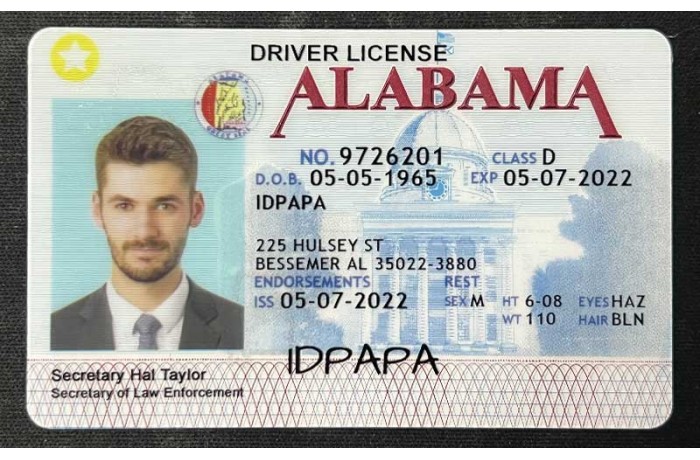Strengthening Defenses Against Identity Theft: A Look at Modern Prevention Strategies
Strengthening Defenses Against Identity Theft: A Look at Modern Prevention Strategies
Blog Article
In today's increasingly digital world, preserving your personal information is more critical than ever. Identity theft has become a rampant problem, with criminals finding increasingly sophisticated methods to steal sensitive data and financial resources. Fortunately, there are a number of proactive measures you can take to bolster your defenses against this growing threat. One of the most fundamental strategies is to adopt strong passwords and practice good password hygiene. Avoid using easily guessable passwords or the same password across multiple accounts. Instead, opt for long, complex passwords that include a mix of uppercase and lowercase letters, numbers, and symbols.
Additionally, explore multi-factor authentication whenever possible. This adds an extra layer of security by requiring you to provide multiple forms of identification before granting access to your accounts. Be cautious about sharing personal information online or over the phone, and be wary of phishing scams that attempt to trick you into revealing sensitive data. Regularly monitor your bank statements and credit reports for any suspicious activity, and promptly report any potential fraud to the appropriate authorities. By implementing these modern prevention strategies, you can significantly decrease your risk of becoming a victim of identity theft and protect your financial well-being.
Navigating the Complex Landscape of copyright Laws and Regulations
The sphere of fake identification is a dynamic one, with laws and regulations changing widely from location to location. Considering to get around these rules can lead to significant legal ramifications. It's vital for individuals to thoroughly comprehend the detailed laws regulating copyright in their region to prevent potential issues.
Getting to know with the diverse penalties for possession copyright can offer valuable awareness into the magnitude of the consequences.
- Moreover, staying current on any recent legal developments is crucially important to ensure you are acting within the limits of the law.
Biometric Authentication: A New Era in Identity
As technology continues to evolve, the need for robust and secure identity verification methods has never been more urgent. Traditional authentication Fake ID laws methods, such as passwords and PINs, are increasingly susceptible to malicious activity. Biometric authentication presents a promising solution by leveraging unique biological characteristics to authenticate identities. From fingerprint and facial recognition to iris scanning and voice analysis, biometrics offer a higher level of security and convenience compared to conventional methods.
- Biometric systems are inherently more complex to forge, as they rely on naturally occurring traits that are individual to each person.
- Moreover, biometrics can be seamlessly integrated into a variety of devices and platforms, improving the user experience.
- As biometric technology continues to develop, we can expect even more sophisticated applications in fields such as finance, healthcare, and government.
The future of secure identity verification undoubtedly lies in the realm of biometrics. By embracing this transformative technology, we can create a more secure digital world for all.
Strengthening Security with Cutting-Edge Identity Verification Technology
In today's digitally driven world, safeguarding personal information has become paramount. Cyber threats are constantly escalating, making it imperative for organizations to implement robust security measures. Cutting-edge identity verification technology plays a crucial role in this endeavor by providing advanced mechanisms to confirm user identities and prevent unauthorized access. By leveraging biometrics, artificial intelligence, and multi-factor authentication, businesses can create a secure environment that protects information.
- Moreover, these technologies can help reduce the risk of fraud and identity theft by implementing real-time monitoring and anomaly detection systems.
- As a result, organizations can improve their security posture, build trust with customers, and maintain compliance with industry regulations.
Combating Fraudulent Identities: Best Practices for Businesses and Individuals
Protecting your business from fraudulent identities is crucial in today's digital landscape. Organizations must implement robust security measures to defend sensitive customer information. This requires multi-factor authentication, continuously updating software, and executing thorough employee screening processes. Consumers can also take steps to limit their risk by tracking credit reports, utilizing robust passwords, and being wary of phishing scams. By collaborating, businesses and individuals can successfully address the threat of fraudulent identities.
Securing Your Digital Footprint: A Comprehensive Guide to Identity Theft Prevention
In today's digitally driven world, safeguarding your personal information is paramount. Your digital footprint can reveal a wealth of sensitive data that identity thieves can exploit for nefarious purposes. Data breaches are increasingly common, emphasizing the urgent need to protect yourself.
- Implement strong and unique passwords for each of your online accounts.
- Ensure your software, including operating systems and tools.
- Be wary when sharing personal information online.
Through following these fundamental steps, you can minimize your risk of becoming a victim of identity theft and protect your digital well-being.
 Report this page
Report this page